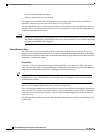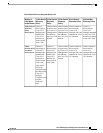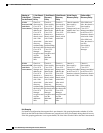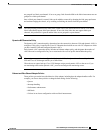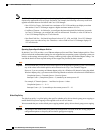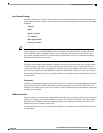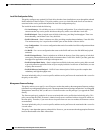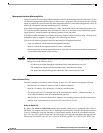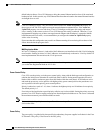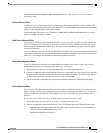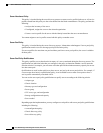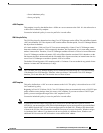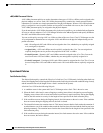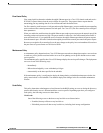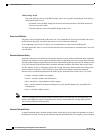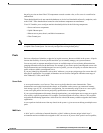
default behavior directs Cisco UCS Manager to bring the remote Ethernet interface down if the associated
border port fails. In this scenario, any vFibreChannel interfaces that are bound to the remote Ethernet interface
are brought down as well.
Cisco UCS Manager, release 1.4(2) and earlier did not enforce the Action on Uplink Fail property for
those types of non-VM-FEX capable converged network adapters mentioned above. If the Action on
Uplink Fail property was set to link-down, Cisco UCS Manager would ignore this setting and instead
issue a warning. In the current version of Cisco UCS Manager this setting is enforced. Therefore, if your
implementation includes one of those converged network adapters and the adapter is expected to handle
both Ethernet and FCoE traffic, we recommend that you configure the Action on Uplink Fail property
with a value of warning.
Please note that this configuration may result in an Ethernet teaming driver not being able to detect a link
failure when the border port goes down.
Note
MAC Registration Mode
In Cisco UCS Manager, releases1.4 and earlier, MAC addresses wereinstalled on allof theVLANs belonging
to an interface. Starting in release 2.0, MAC addresses are installed only on the native VLAN by default. In
most implementations this maximizes the VLAN port count.
If a trunking driver is being run on the host and the interface is in promiscuous mode, we recommend that
you set the Mac Registration Mode to All VLANs.
Note
Power Control Policy
Cisco UCS uses the priority set in the power control policy, along with the blade type and configuration, to
calculate the initial power allocation for each blade within a chassis. During normal operation, the active
blades within a chassis can borrow power from idle blades within the same chassis. If all blades are active
and reach the power cap, service profiles with higher priority power control policies take precedence over
service profiles with lower priority power control policies.
Priority is ranked on a scale of 1-10, where 1 indicates the highest priority and 10 indicates lowest priority.
The default priority is 5.
For mission-critical application a special priority called no-cap is also available. Setting the priority to no-cap
prevents Cisco UCS from leveraging unused power from that particular blade server. The server is allocated
the maximum amount of power that that blade can reach.
You must include this policy in a service profile and that service profile must be associated with a server
for it to take effect.
Note
Power Policy
The power policy is a global policy that specifies the redundancy for power supplies in all chassis in the Cisco
UCS domain. This policy is also known as the PSU policy.
Cisco UCS Manager GUI Configuration Guide, Release 2.0
24 OL-25712-04
Server Architecture and Connectivity



